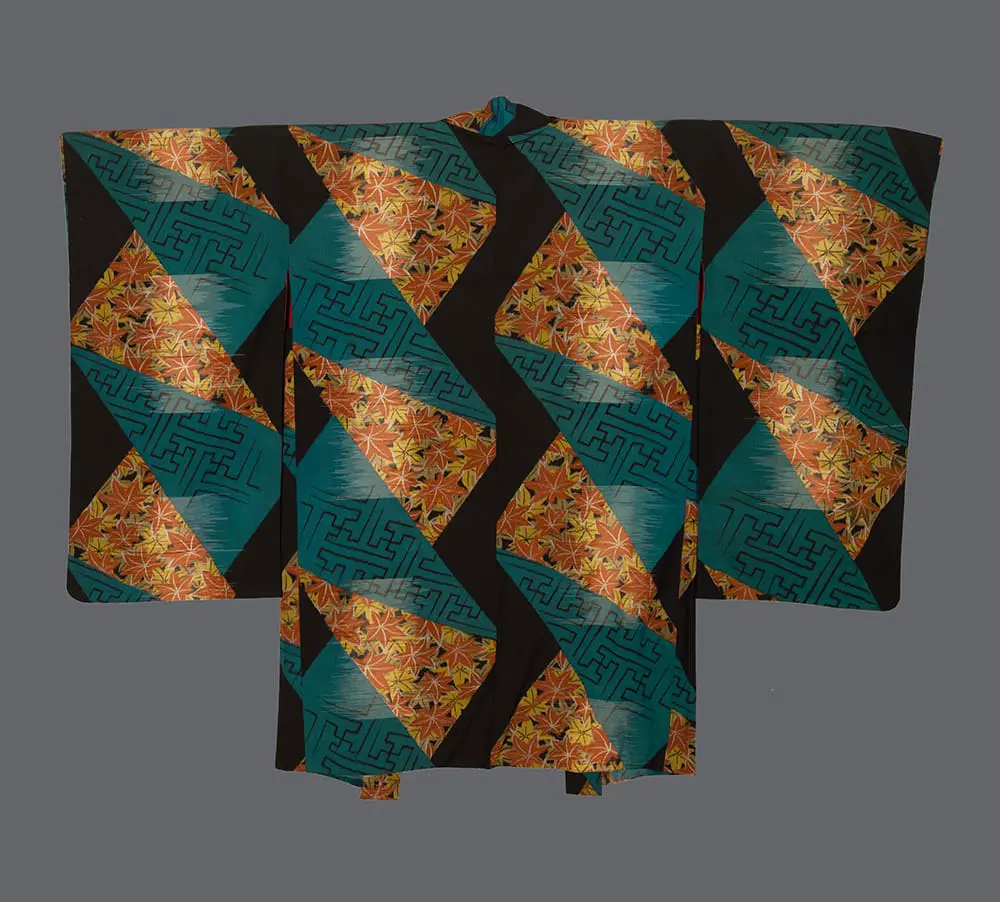Base fabric: a meisen-omeshi silk with strongly twisted rayon wefts, of hanheiyo-gasuri technique
Size style: Naga-haori
Family crests (mon) present: none
Dimensions: 50 inches (127 cm) from sleeve-end to sleeve-end and 37 inches (94 cm) in height
A harmonious blend of traditional and modern design elements marks this silk and rayon composition, featuring elegant kaede (maple leaf) and sayagata patterns on kiredori (overlapping fabric scraps). The design reveals an interplay of vibrant colors and intricate patterns. Warm golden yellow and orange hues of densely-arranged maple leaves create a vivid contrast against the cooler bold black and teal sayagata pattern. The sayagata is a traditional Japanese motif, its interlocking swastika shapes symbolizing eternity and continuity. The overlapping fabric scrap design gives the haori a dynamic and patchwork-like appearance, enhancing its visual interest. The way this design combines the geometric diagonal bands with the contrasting patterns (maze-like pattern in teal, floral pattern in orange) while maintaining a strict geometric organization is very much in line with De Stijl's principles of geometric abstraction and ordered composition. The strong contrast between the solid black diagonals and the patterned areas creates the kind of dynamic tension that De Stijl artists sought to achieve.
The overall layout, with its rhythmic repetition and bold diagonals, shares some aesthetic principles with Constructivism and the Bauhaus movement, both known for their innovative approaches to design.
.avif)











